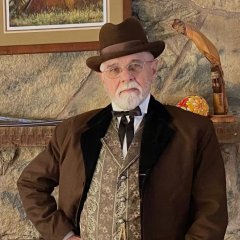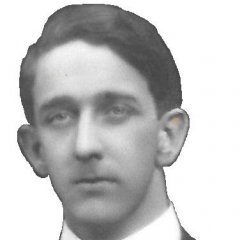
Marshal Mo Hare, SASS #45984
Territorial Governors-
Posts
68,378 -
Joined
-
Last visited
-
Days Won
16
Marshal Mo Hare, SASS #45984 last won the day on March 16
Marshal Mo Hare, SASS #45984 had the most liked content!
About Marshal Mo Hare, SASS #45984
- Birthday April 19
Previous Fields
-
SASS #
45984
-
SASS Affiliated Club
TG MVM
Profile Information
-
Gender
Male
-
Location
New Hampshire
Recent Profile Visitors
Marshal Mo Hare, SASS #45984's Achievements

SASS Wire Vet (1/1)
29.3k
Reputation
-
WORDY WORDS XXIV
Marshal Mo Hare, SASS #45984 replied to Blackwater 53393's topic in SASS Wire Saloon
Corn maze -
Up until the Industrial Revolution, every town had kept its own local time based on the position of the sun, so there was, for example, a 16 minute difference between London and Plymouth. Railways meant it suddenly made a difference if you were 16 minutes off all the time. And telegraphs meant there was an actual way to share what time it was. Greenwich Mean Time wouldn’t become legally mandated until 1880, apparently because folks kept showing up late to court and blaming their local time zone for the discrepancy. But accurate clocks weren’t yet common for most people to own. So how did everyone keep up with the newly standardized time? If they lived within sight of the Royal Observatory, they could watch for the “time balls” they dropped to mark the hour (and later the clock kept up to date at the observatory’s gates). But others turned to a more… hands-on service. Starting in 1836, a former Royal Observatory employee named John Belville charged people an annual fee to use his pocket watch. Once a week, he’d come by and visit them and share the time on his watch—which he kept accurate thanks to his access to the observatory’s chronometers—so they could adjust their own watches accordingly. John died in 1856, by which time the gate clock showed the public the time and anyone could get the time via telegraph if they really needed to. But John’s 200 subscribers knew and trusted the pocket watch system, so they asked his widow Maria if she’d take up his mantle. She did so for 36 years before retiring. By the time she left the business, people definitely had other ways of accessing the time. But folks couldn’t give up their trusty time lady, so John and Maria’s daughter Ruth took over. Despite the continued advancement of time-keeping tech—and the naysaying of at least one ruthless hater—she kept up the business until 1940. She was 86 when she retired, and apparently only did so because World War II made it too dangerous for a woman of her age to walk the streets.
- 28 replies
-
- 10
-

-

-
They Have a Manual for That
Marshal Mo Hare, SASS #45984 replied to Subdeacon Joe's topic in SASS Wire Saloon
I googled “Army Airforce Manual for ball turret gunners”. I got a lot of text about a manual for gunners. -
Useless fun fact-ish type stuff
Marshal Mo Hare, SASS #45984 replied to Wallaby Jack, SASS #44062's topic in SASS Wire Saloon
When Bella Lugosi died at age 73, he was buried in a Dracula cape. -
In 1944, a U.S. military pilot-in-training named Hazel Ying Lee crash-landed in a wheat field in Kansas. But instead of getting help, she found herself in trouble. The farmer who owned the field thought she was a Japanese soldier and started chasing her with a pitchfork, yelling to his neighbors that the Japanese were invading Kansas. Soon, Lee was surrounded by the farmer’s angry neighbors. But Hazel stayed calm. She kept telling them over and over that she was an American fighter pilot. Eventually, they believed her and backed off.
-
They Have a Manual for That
Marshal Mo Hare, SASS #45984 replied to Subdeacon Joe's topic in SASS Wire Saloon
About 2002 I met a retired Marine Warrant Officer who was an expert in laying down steel panels for an emergency airstrip. -
I HATE WALMART!
Marshal Mo Hare, SASS #45984 replied to Forty Rod SASS 3935's topic in SASS Wire Saloon
part of my physical therapy is i need to walk more. When the weather is cold, it's a good place to get in a mile or two. -
I HATE WALMART!
Marshal Mo Hare, SASS #45984 replied to Forty Rod SASS 3935's topic in SASS Wire Saloon
Not a fan of the store and I go there only if necessary (very, very rarely), but it’s better here. -
When R Lee Ermey was capitalizing on his role as Gunny he sold ‘ringtones’. Use your imagination.
-
Sounds like an episode of Monty Python.
-
They’ll catch up.









